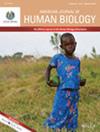Salivary/Serum Progesterone Ratio Differs Between Menstrual Cycle Phases but Not Between Populations: Implications for Health, Reproductive, and Behavioral Research
Abstract
Objectives
Many investigations of human health, behaviors, and adaptations require an indicator of ovarian cycle functioning as a causal, outcome, or confounding variable in the study design and analyses. Because the dynamic fluctuations in cycle hormones can rarely be adequately characterized by a single measurement, but repeated blood sampling can be onerous, salivary free progesterone (PFree-SAL) concentration is widely used in both clinical and research contexts as an alternative to total progesterone concentration in venous blood samples (PTotal-VEN). However, some doubts have been raised about the use of PFree-SAL because of suggestions that Bolivian and other populations and/or individuals might differ markedly in the ratio of PFree-SAL to PTotal-VEN (the apparent uptake fraction, UF). If there are such differences, several decades of comparative population research based on PFree-SAL would require reconsideration, and a seemingly useful tool in both clinical and research contexts would be lost or require additional extensive pre-use evaluations. Such impacts would fall disproportionally on clinical monitoring and research studies of menstruating persons, a segment of the population that has long been underrepresented in research and clinical trials, especially in low resource conditions. Therefore, we tested three hypotheses: (H1) UF differs by ovarian cycle phase; (H2) UF differs in Bolivian women from that of non-Bolivian women; and (H3) within a population, UF is consistently higher or lower in some individuals than in most others.
Methods
We collected mid-follicular and mid-luteal near-concurrent samples of venous blood and saliva from 36 healthy premenopausal Bolivian women. PTotal-VEN and PFree-SAL were measured using commercial enzyme immunoassays. To test the study hypotheses, we used graphical and statistical methods to analyze these new data and to analyze data from several previously published studies.
Results
In our study sample of Bolivian women, PFree-SAL and PTotal-VEN concentrations (n = 66 pairs) were significantly and highly correlated (Spearman's rho = 0.858; mixed model: intercept = 77.4 pmol/L [(p < 0.001), β = 0.0191 (p < 0.001)]). An individual's follicular-phase UF and luteal-phase UF were not significantly correlated (rho = −0.19, p = 0.462). Median UF equaled 8.1% for follicular and 2.3% for luteal phase pairs and were comparable to published values for other populations.
Conclusions
Hypothesis 1 was supported. Consistent with prior reports for other populations, in these Bolivian women UF was higher and more variable in the follicular than in the luteal phase. The source(s) of phase-associated variation in UF deserves additional study, particularly the dynamic relationship to different conformers of corticosteroid-binding globulin (CBG). Hypothesis 2 was not supported. Paired PFree-SAL and PTotal-VEN were highly correlated, and UF in these Bolivians was comparable to published values for other populations. Hypothesis 3 was not supported. There was no evidence that some individuals have consistently higher (or lower) UF than most other persons. In sum, these findings do not support the suggestions that the physiology underlying the relationship between PFree-SAL and PTotal-VEN differs substantially and inexplicitly between populations and individuals. These results also reinforce the critical roles of fastidious attention to sample collection and handling, judicious assessment of assay results, and appropriate statistical methods when using ovarian steroid data in any project. We suggest some guidelines for meeting these requirements. Used with due consideration for its advantages and limitations, PFree-SAL reliably tracks PTotal-VEN during the menstrual cycle and is a useful option in the biomarker toolkit. Just as it is costly to continue our work with tools not up to the task, so is it costly to discard useful tools without good reason. The development (and improvement through replication) of a robust toolkit for assessing changes in and the impacts of menstrual cycle hormones is foundational to reducing gender-based health disparities. (The linked file listed below under “Supporting Information” presents these findings in Spanish).


 求助内容:
求助内容: 应助结果提醒方式:
应助结果提醒方式:


